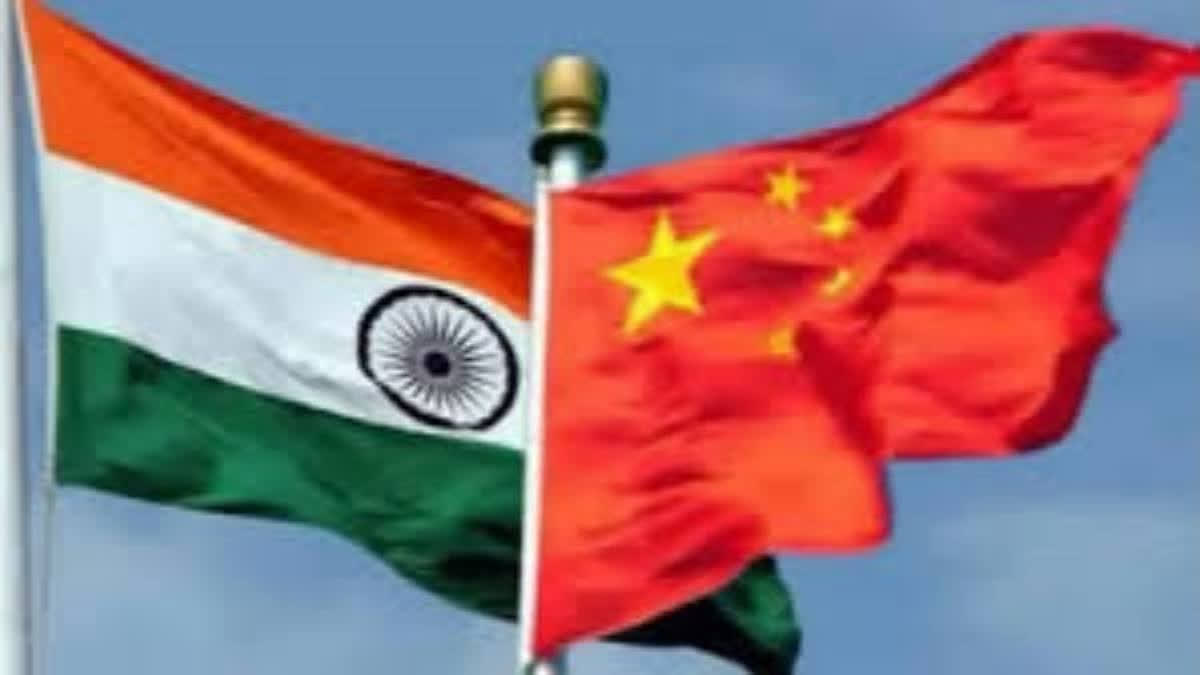New Delhi: In a significant diplomatic effort, India and China are scheduled to meet for the special representatives dialogue in Beijing on December 18. This meeting follows constructive discussions held in New Delhi and the recent troop disengagement at two identified friction points along the Line of Actual Control in eastern Ladakh, reflecting a commitment to maintaining peace and stability in the region.
It is pertinent to note that India and China are poised to resume their special representative dialogue on border issues after a five-year hiatus. This development reflects a positive step towards enhancing bilateral relations, particularly in light of a recent agreement on patrolling the boundary.
Experts believe that the upcoming high-level talks could pave the way for de-escalation and a drawdown of troops, which have become entrenched in Ladakh, Arunachal Pradesh and Sikkim, noting that maintaining these forces throughout the year is costly, and even China feels the strain.
In conversation with ETV Bharat, Major General (Retd) GD Bakshi explains where the India-China relations stand and what can be expected from the special representative’s (SR) dialogue.
“India and China appear to be improving their relationship, which has been tense for a long time. This change is happening because the United States, under the Biden administration, has acted in ways that many see as negative for India. The US has been involved in political turmoil in Bangladesh, helping the Jamaat-e-Islami party gain power. Some believe the US is exerting pressure on Bangladesh to cooperate with its goals, especially concerning regional conflicts and groups that threaten India. Given these developments, India has decided to reevaluate its alliances. It recognises the need to strengthen ties with China to better address the challenges posed by Pakistan and Bangladesh.”, said Bakshi.
“This shift is seen as essential for India's security, especially as the situation in the region becomes more complex. Initially, there were concerns about trusting China. However, recent steps to reduce tensions along their borders have created cautious hope. If this trend continues, it could benefit India as it navigates a changing world where relationships can shift quickly based on national interests. The future of this relationship remains uncertain, but the current efforts to warm ties seem to be a strategic move to address regional challenges”, added the defence expert.
He noted that the fundamental reality is that the thaw in India-United States relations emerged primarily due to the US's growing concerns about an increasingly assertive China—economically, militarily and especially with its Navy, which is now the largest in the world. India, Japan and Australia shared this worry, which ultimately led to the formation of the Quad Alliance. However, tensions escalated when the US democratic administration adopted a sharply hostile stance towards India. This left India no choice, but to lower tensions with China; it was a pragmatic geostrategic move, signalling to the US that India cannot be pushed beyond a certain limit.
“The good news is that with Donald Trump assuming office on January 20, we can anticipate a shift in dynamics. His appointments for key positions such as National Security Advisor Mike Waltz and Tulsi Gabbard are aligned with anti-China sentiments and pro-India policies. I envision a transformation akin to a kaleidoscope; in a multipolar world, we witness rapid alignments and realignments driven by the pursuit of national interests. It’s encouraging that our National Security Advisor Ajit Doval is scheduled to meet with his Chinese counterpart in Beijing. This engagement could pave the way for de-escalation and a drawdown of troops, which have become entrenched in Ladakh, Arunachal Pradesh and Sikkim. Maintaining these forces throughout the year is costly, and even China feels the strain. China, too, is eager to de-escalate as they face challenges with Taiwan and in the South China Sea. Therefore, both nations recognise the need for a drawdown; they are equally motivated to lower tensions along the border. China’s underestimation of India's resolve has shifted drastically since 1962. Now, India has mirrored their troop deployments, compelling the Chinese to reassess their strategy. Our military assertiveness has made it clear that we can respond with equal strength. This mutual recognition of the need for de-escalation is vital, enabling both countries to focus their strategic energies where they matter most”, GD Bakshi stated.
The Ministry of External Affairs (MEA) on Monday announced that the Special Representatives (SR) dialogue will decisively focus on maintaining peace and tranquillity in the border areas. They are determined to find a fair, reasonable, and mutually acceptable solution to the boundary issue.
Ajit Doval, National Security Advisor and India's Special Representative (SR) on the India-China boundary issue, is set to lead the 23rd meeting of the SRs in Beijing on December 18. He will engage with his Chinese counterpart, Wang Yi, a key member of the Political Bureau of the Communist Party of China (CPC) Central Committee and the Minister of Foreign Affairs of China, as confirmed by the MEA in a late-night statement on Monday.
There has been no SR dialogue in five years due to the eastern Ladakh border dispute, with the last round held in December 2019. Doval and Wang last met in St Petersburg on September 12. The dialogue revival was decided during a meeting between Prime Minister Modi and President Xi in Kazan on October 23 this year, soon after India and China agreed on disengagement in Demchok and Depsang.
Furthermore, Jayadeva Ranade, President, the Centre for China Analysis and Strategy and a seasoned China analyst, told ETV Bharat that the current situation at the border is delicate, but the readiness of the Chinese to engage in discussions is a promising sign.
“The upcoming dialogue, I believe, is a significant and positive development. It represents a crucial step forward in fostering dialogue and a willingness to ease tensions, particularly from the Chinese side. The current situation at the border is delicate, but the readiness of the Chinese to engage in discussions is a promising sign. However, I feel we must temper our expectations. There is still an extended journey ahead before we can claim normalisation. What we've seen is merely the disengagement at a few locations, and it’s imperative that we also witness a de-escalation of tensions and a withdrawal of troops. Our goal should be to return to the status quo of April 2020, but this process is not instantaneous”, Ranande said.
He explains that it's unrealistic to expect the Chinese to withdraw their troops immediately; this remains a substantial challenge. “Until we address this issue, I don’t foresee a return to normalised relations as they once were. Current government statements indicate that achieving this will take considerable time and effort. Additionally, the erosion of trust resulting from recent events cannot be ignored and regaining that trust will require significant commitment from both sides. While the ongoing efforts to reduce tensions are commendable and represent a foundational step toward progress, it is essential to maintain realistic expectations. We are embarking on a long and thoughtful path ahead, and patience will be crucial in this journey”, the expert pointed out.
Ranade emphasised that different nations interpret the current geopolitical landscape in diverse ways. “In the US and Europe, there’s a sentiment that the renewed dialogue between India and China might suggest India could adopt a more neutral position in its international relations, possibly distancing itself from the US. However, I firmly believe that this scenario is unlikely. For India, the relationship with the US is essential, and it will remain a top priority. Simultaneously, India recognizes the importance of maintaining a constructive relationship with China to ease border tensions. This balanced strategy is critical for our future. Moreover, the fact that China is now willing to engage in dialogue and de-escalate tensions likely arises from its pressing international challenges, mounting pressure from the US, and serious economic issues. These elements seem to be driving them to pursue conversations and explore avenues for reducing tensions.”
The military standoff along the Line of Actual Control (LAC) in eastern Ladakh, which ignited in May 2020, reached a critical juncture with a deadly clash in the Galwan Valley in June, leading to a profound deterioration in relations between the two neighbouring nations. However, the path to resolution has emerged, culminating in the successful completion of the disengagement process at the last two contentious points, Demchok and Depsang, under a pivotal agreement finalized on October 21.



